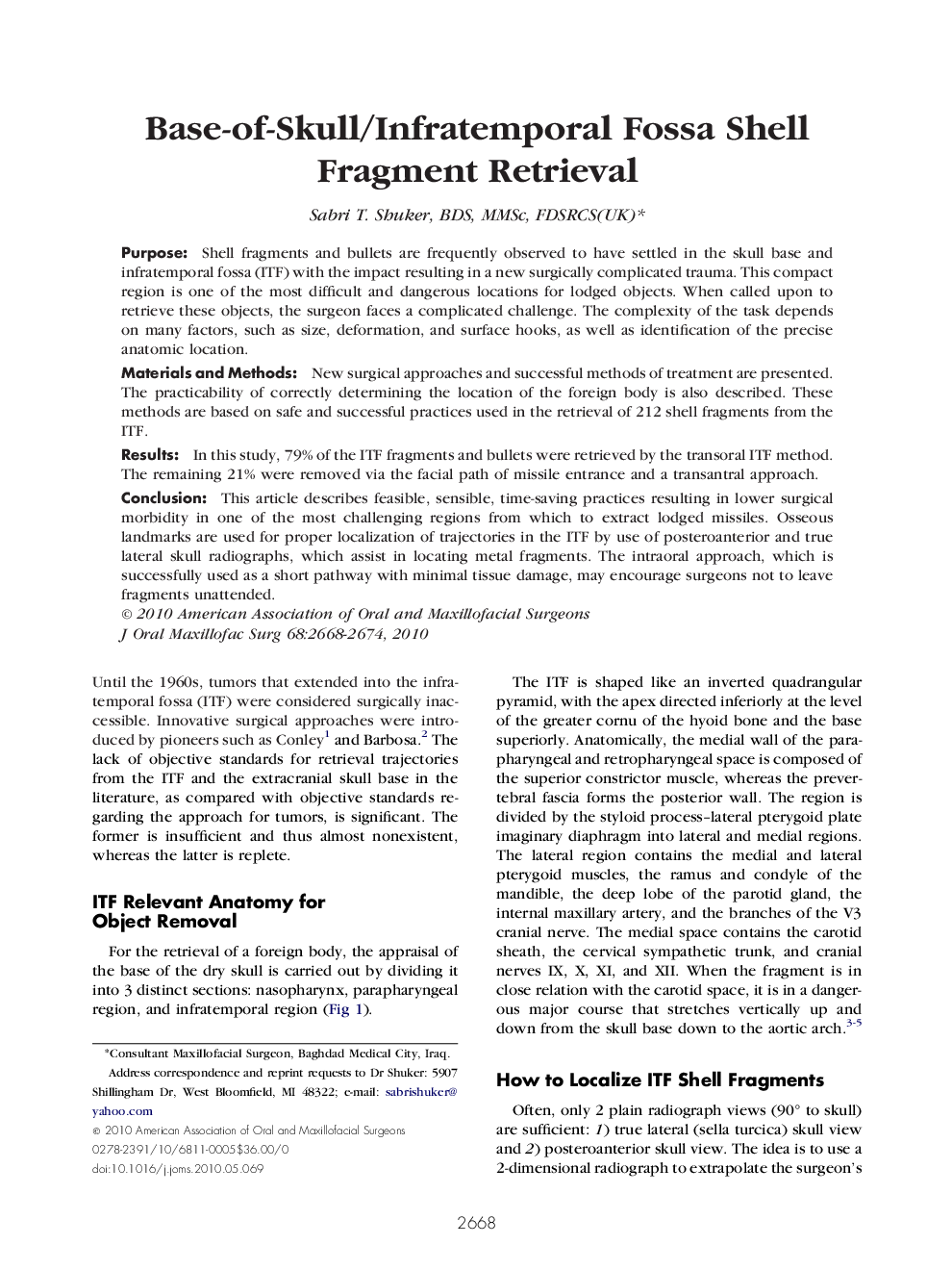| Article ID | Journal | Published Year | Pages | File Type |
|---|---|---|---|---|
| 3154892 | Journal of Oral and Maxillofacial Surgery | 2010 | 7 Pages |
PurposeShell fragments and bullets are frequently observed to have settled in the skull base and infratemporal fossa (ITF) with the impact resulting in a new surgically complicated trauma. This compact region is one of the most difficult and dangerous locations for lodged objects. When called upon to retrieve these objects, the surgeon faces a complicated challenge. The complexity of the task depends on many factors, such as size, deformation, and surface hooks, as well as identification of the precise anatomic location.Materials and MethodsNew surgical approaches and successful methods of treatment are presented. The practicability of correctly determining the location of the foreign body is also described. These methods are based on safe and successful practices used in the retrieval of 212 shell fragments from the ITF.ResultsIn this study, 79% of the ITF fragments and bullets were retrieved by the transoral ITF method. The remaining 21% were removed via the facial path of missile entrance and a transantral approach.ConclusionThis article describes feasible, sensible, time-saving practices resulting in lower surgical morbidity in one of the most challenging regions from which to extract lodged missiles. Osseous landmarks are used for proper localization of trajectories in the ITF by use of posteroanterior and true lateral skull radiographs, which assist in locating metal fragments. The intraoral approach, which is successfully used as a short pathway with minimal tissue damage, may encourage surgeons not to leave fragments unattended.
